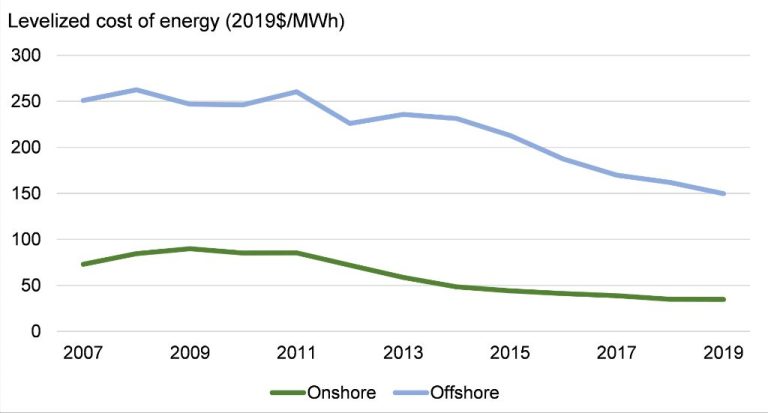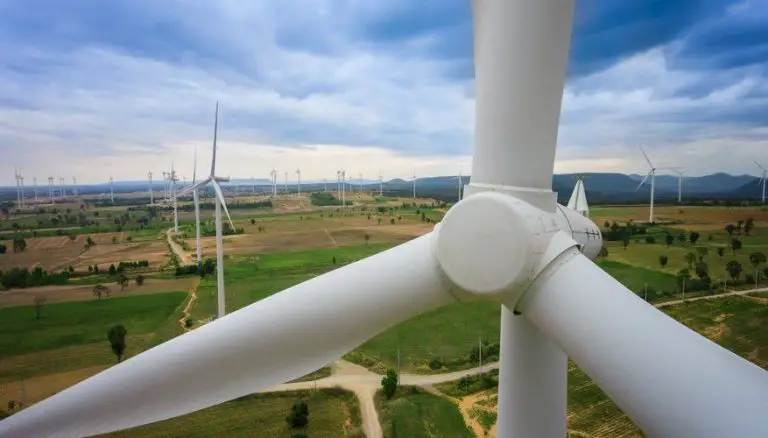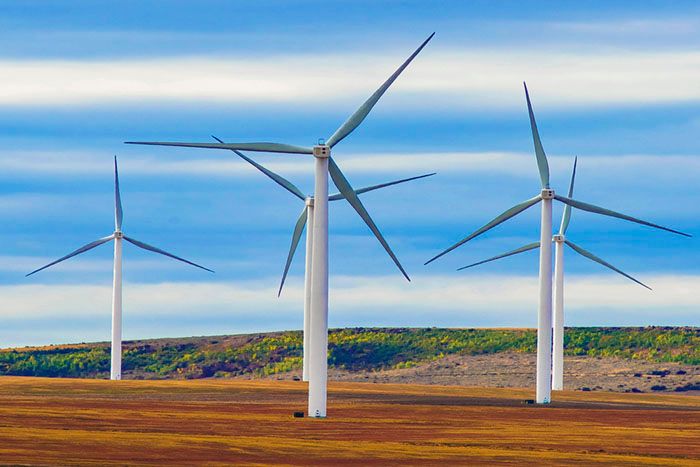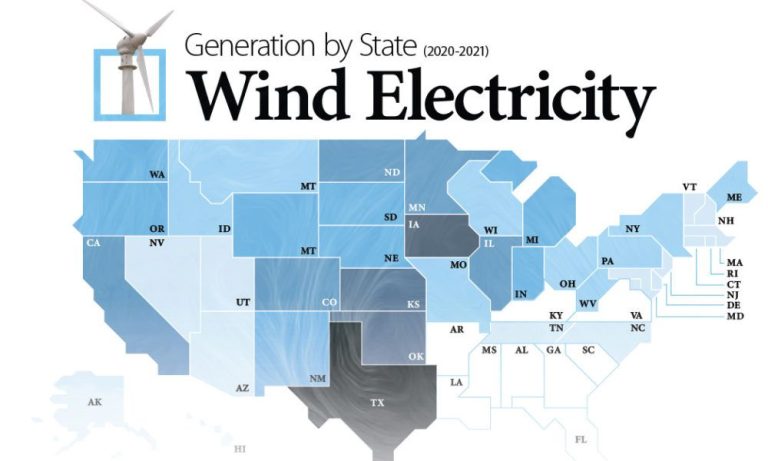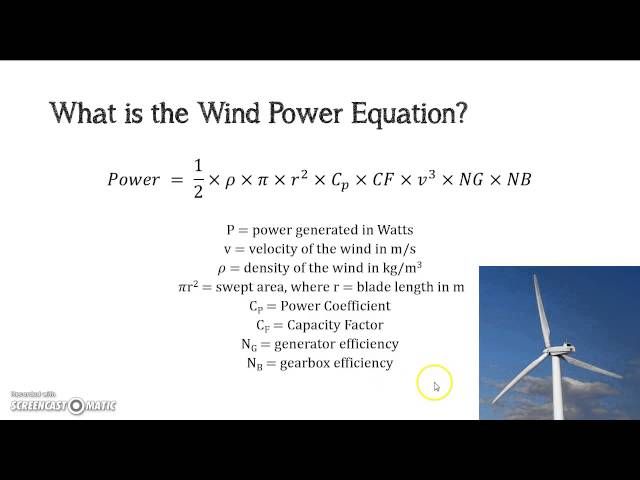How Wind Energy Works?

Wind energy refers to the process of harnessing the natural energy of wind and converting it into useful forms like electricity using wind turbines 1. Although wind power has been utilized for thousands of years, modern wind turbines capable of generating utility-scale electricity were first developed in the late 1970s. Since then, wind energy production has seen tremendous growth and is now one of the fastest-growing renewable energy sources worldwide. As of 2020, wind power accounted for 8.4% of total U.S. electricity generation and is capable of supporting the grid with over 122 gigawatts of electric capacity 2. Harnessing wind is an important part of the global transition to clean energy and crucial for meeting emissions reduction targets.
Wind Energy Basics
Wind is created by the uneven heating of the Earth’s surface by the sun. Because the Earth’s surface is made up of different types of land and water, some areas absorb and retain heat more than others. This causes some areas to become warmer than other areas. Warm air expands and rises, while cooler air contracts and sinks. This difference in temperature causes winds to form as hot air rises and cold air rushes in to take its place https://www.eia.gov/energyexplained/wind/
Areas where air is rising are areas of low pressure, while areas where air is sinking are areas of high pressure. Wind flows from high pressure areas to low pressure areas. The greater the temperature difference, the stronger the wind https://ei.lehigh.edu/learners/energy/wind1.html
Wind Turbine Components
The major components of a modern horizontal-axis wind turbine include:
Tower
The tower supports the structure and houses the electrical components. Towers are made of tubular steel or concrete and range in height from 30 to 140 meters tall. Taller towers enable turbines to capture stronger winds at higher elevations.
Nacelle
The nacelle sits atop the tower and contains the gearbox, low- and high-speed shafts, generator, controller, brake and transformer. Some nacelles are large enough for a helicopter to land on.
Rotor
The blades and hub together form the rotor. Most turbines have three blades, made of fiberglass or carbon fiber composites. Rotors range from 40 to 140 meters in diameter. The rotor attaches to the main shaft, which turns the high and low speed shaft that drive the generator.
Generator
The generator uses electromagnetic induction to convert the rotational energy into electrical energy. Many turbines use an asynchronous generator that outputs variable frequency AC power.
Gearbox
Most turbines utilize a gearbox which steps up the rotational speed from the turbine to the generator. The gearbox allows the generator to operate at higher, more efficient speeds.
Transformer
The transformer inside the nacelle converts the electricity from AC to levels suitable for injection into the utility grid.
How Wind Turbines Work
Wind turbines convert the kinetic energy in wind into mechanical power that runs a generator to produce electricity. This conversion happens in three main steps:
- Wind turns the rotor blades on the wind turbine. The blades are connected to a drive shaft running through the machine. When the wind blows over the blades, the lift force makes them turn. The rotational motion gets transferred down the drive shaft.
- The drive shaft connects to a gear box which increases the rotational speed to the level required by the generator. Most turbines have a gear box which converts the slow rotational speed of the rotor to a faster rotation used by the generator.
- The high speed shaft from the gear box goes into a generator which converts the mechanical energy into electrical energy using electromagnetic induction. The electricity gets fed into the grid and distributed.
So in summary, the kinetic energy of the wind turns the blades, which spin a shaft connected to a generator to create electricity. The generator works based on Faraday’s law of induction where motion between a magnetic field and a conductor induces electricity.
For more details, see the Department of Energy’s overview on how wind turbines work.
Wind Farm Design
Wind farms are usually designed and situated in locations with a good wind resource and favorable terrain, such as offshore or in windy rural areas (Scott Haynes, 2013). The wind turbines are carefully arranged to minimize turbulence and maximize energy capture. Spacing between turbines is key. If placed too close together, the turbines can interfere with each other’s wind flow. If too far apart, fewer turbines can be installed. Today’s utility-scale wind turbines are usually spaced 3-10 rotor diameters apart (Renewable Energy World, 2009).
Other factors in wind farm design include land accessibility, distance to the grid, environmental impacts, and community acceptance. The layout is optimized to maximize energy production while minimizing costs. Advanced software tools and wind resource assessments are used to model and predict the performance of the proposed wind farm.
Connecting to Grid
Wind turbines produce fluctuating amounts of power based on wind speeds, so they need to connect to the utility grid to distribute the electricity they generate. Most wind turbines are connected to local distribution or transmission lines to feed the generated electricity into the larger utility grid.
The turbine’s generator produces alternating current electricity at wild frequencies that need to be synced to the 60 Hz standard of the grid. Power electronics and a control system are used to regulate the voltage, current, and frequency and match it to the grid.1 By feeding into the grid, the fluctuating power output from wind turbines is balanced by the relative stability of large-scale utility generation.
Connecting wind turbines to the grid requires approvals from the local utility and may involve technical considerations like stability, power quality, and managing disconnections. But once connected, the wind farm can produce power for widespread use across the grid.
Environmental Impacts
Wind energy has both positive and negative impacts on the environment. Wind turbines can have a visual impact on the landscape, as some people find them unsightly and disruptive to views. The rotating blades also generate noise, which can annoy people living close by. There are also concerns about the effects of wind turbines on wildlife, especially birds and bats that can collide with the structures. However, researchers have found that strategic placement and improved technology can minimize many of these negative impacts.
The key environmental benefit of wind energy is its low carbon emissions. Wind turbines produce electricity without emitting greenhouse gases like carbon dioxide and methane. According to the U.S. Energy Information Administration, wind energy in 2020 avoided an estimated 202 million metric tons of CO2 emissions in the United States. This makes wind farms far cleaner for the climate than fossil fuel power plants.
While wind turbines do require materials and land to construct, wind energy has one of the lowest carbon and water footprints per unit of electricity generated compared to other energy sources. The development of wind farms on existing farms and ranches also allows the land to remain productive while generating renewable energy. With strategic siting, planning, and technological improvements, wind energy can continue providing substantial environmental benefits.
Economic Benefits
Wind energy provides significant economic benefits at the local, state, and national levels. According to the WINDExchange, wind energy projects are a source of new jobs, tax revenue, and lease payments to landowners.
Wind power is now one of the most significant sources of renewable energy in the United States. As of 2020, wind power comprised 42% of new electric generating capacity additions in the US. There is now over 122 GW of wind power capacity installed in the US, able to generate around 8% of the nation’s electricity demand. The wind energy industry now employs over 120,000 Americans.
Wind projects boost local economies by providing new jobs and lease payments to landowners. Based on data from the National Renewable Energy Laboratory, land lease payments range from $3,000 to over $6,000 per turbine, providing ranchers and farmers with a drought-resistant cash crop. Operation and maintenance of wind farms also creates long-term skilled jobs for local communities. According to the New York State Energy Research and Development Authority, a 100 MW wind farm can create around 48 permanent operations and maintenance jobs.
Challenges
While wind energy has many benefits, there are also some challenges to scaling up its use. Some of the main challenges include:
High upfront costs. Constructing a wind farm requires significant upfront investment. According to the U.S. Department of Energy, wind projects require extensive feasibility studies and can take many months to years to permit and construct. The costs must be recovered over the project’s lifetime through revenue from energy sales.
Intermittent power output. The output of wind turbines depends on wind conditions and is variable. Additional grid infrastructure and backup power sources may be needed to provide consistent electricity supply. There are ways to mitigate wind’s variability, such as interconnected wind farms and forecasting tools.
Potential local opposition. Some people oppose wind turbines due to concerns over visual impacts, noise, and effects on property values. Proper siting, community engagement, and compensation to local residents can help address some opposition.
Sources:
Future of Wind Energy
The future of wind power looks bright as the technology continues advancing and costs keep falling. According to the U.S. Department of Energy’s Wind Vision report, wind has the potential to reliably supply 20% of U.S. electricity by 2030 and 35% by 2050. Key trends shaping the future of wind energy include:
Continued cost reductions – Wind turbine costs have fallen nearly 70% since 2009. As technology improves and the wind industry scales up, costs are projected to decrease an additional 10-20% by 2030. This makes wind energy more economically competitive.
Offshore wind potential – Offshore wind farms currently make up only 1% of global wind capacity but have vast potential, especially along U.S. coastlines. Floating offshore turbines open up even more areas. Offshore wind is forecast to grow nearly 20% annually through 2030.
Hybrid wind systems – Combining wind with solar PV, batteries or other generation provides more reliable renewable power output. As storage technology advances, hybrid systems will help compensate for wind’s natural variability.
With continued innovation, supportive policies, and expanded transmission infrastructure, the Department of Energy expects wind to be a major pillar of a cleaner, more distributed and more affordable U.S. electricity system.

